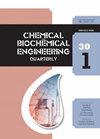Phenotypic Plasticity, Growth, Biochemical Composition, Total Phenolic Content, and AntioxidanActivity of Microalga Desmodesmus multivariabilis Under Different Nitrogen and Phosphorus Concentrations
IF 1.6
4区 生物学
Q4 BIOTECHNOLOGY & APPLIED MICROBIOLOGY
引用次数: 0
Abstract
The use of microalgae in biotechnological studies is increasing day by day because of their ability to produce and store secondary metabolites under extreme conditions. When the culture conditions such as light, nutrients, pH, and temperature are modified, the synthesis and storage amount of these secondary metabolites change. In this study, the effects of different nitrogen and phosphorus concentrations on the morphological changes, growth, biochemical composition, total phenolic content, and antioxidant activ ity of Desmodesmus multivariabilis were investigated. The study results show that changing of the nitrogen and phosphorus concentration in the microalgae culture medium is an effective strategy for changing growth, biochemical composition, total phenolic content, and antioxidant activity parameters of microalgae. All culture conditions should be detected, depending on the substance desired to be ob tained from microalga and its biotechnological application. Therefore, this study is substan tial as it is the first study on this concept with D. multivariabilis, and for obtaining eco nomically important bioactive compounds of this species, this paper will play a key role.不同氮磷浓度下微藻类Desmodesmus multivariabilis的表型可塑性、生长、生化成分、总酚含量和抗氧化活性
由于微藻能够在极端条件下生产和储存次生代谢物,因此其在生物技术研究中的应用与日俱增。当光照、养分、pH 值和温度等培养条件发生变化时,这些次生代谢物的合成和储存量也会发生变化。本研究考察了不同氮、磷浓度对多孔菌(Desmodesmus multivariabilis)形态变化、生长、生化成分、总酚含量和抗氧化活性的影响。研究结果表明,改变微藻培养基中氮和磷的浓度是改变微藻生长、生化成分、总酚含量和抗氧化活性参数的有效策略。所有培养条件都应进行检测,这取决于希望从微藻中获得的物质及其生物技术应用。因此,本研究具有重要意义,因为它是首次对多维藻进行这一概念的研究,对于从该物种中获取具有重要生态意义的生物活性化合物,本文将发挥关键作用。
本文章由计算机程序翻译,如有差异,请以英文原文为准。
求助全文
约1分钟内获得全文
求助全文
来源期刊
CiteScore
2.70
自引率
6.70%
发文量
23
审稿时长
>12 weeks
期刊介绍:
The journal provides an international forum for presentation of original papers, reviews and discussions on the latest developments in chemical and biochemical engineering. The scope of the journal is wide and no limitation except relevance to chemical and biochemical engineering is required.
The criteria for the acceptance of papers are originality, quality of work and clarity of style. All papers are subject to reviewing by at least two international experts (blind peer review).
The language of the journal is English. Final versions of the manuscripts are subject to metric (SI units and IUPAC recommendations) and English language reviewing.
Editor and Editorial board make the final decision about acceptance of a manuscript.
Page charges are excluded.

 求助内容:
求助内容: 应助结果提醒方式:
应助结果提醒方式:


